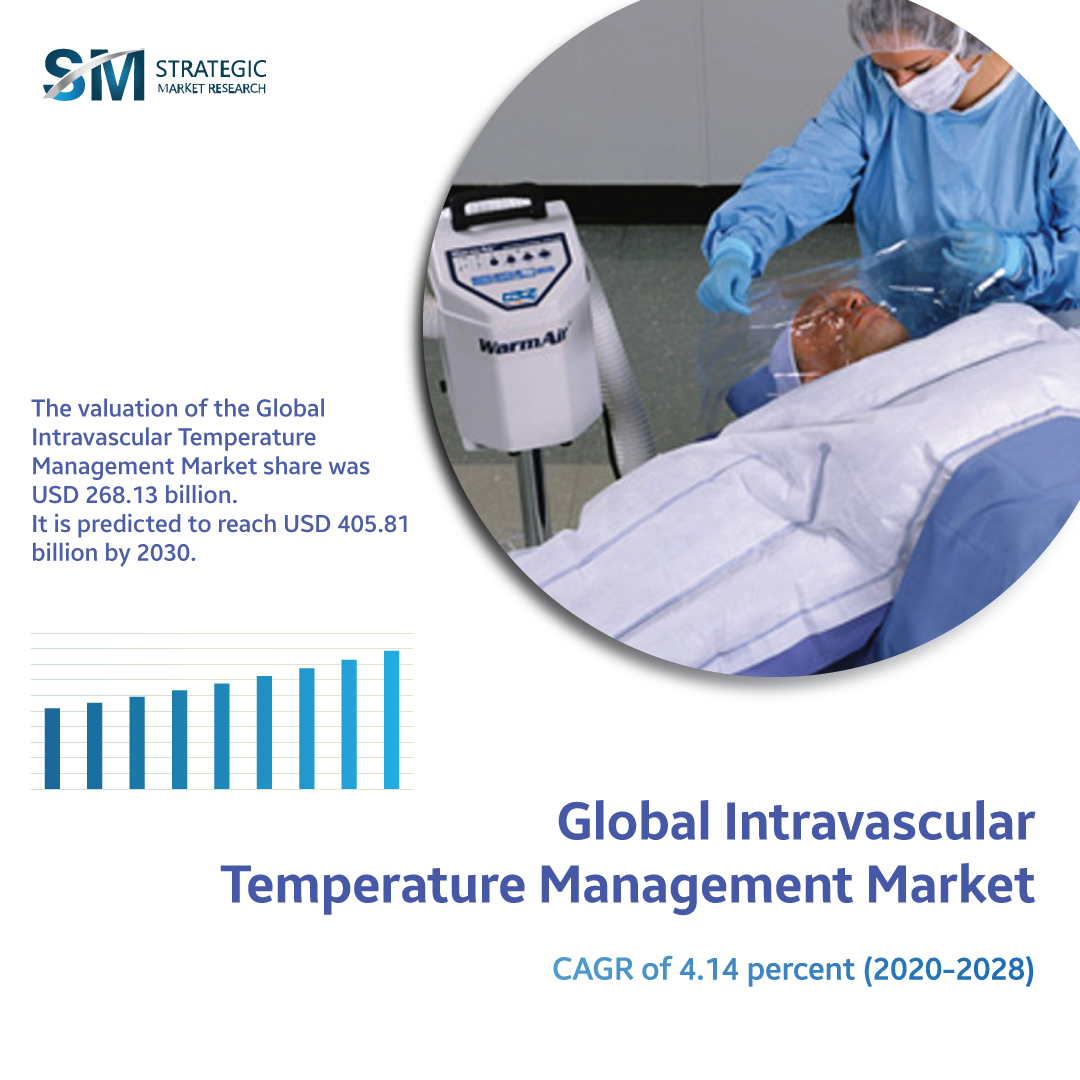The market for intravascular temperature management systems is expanding primarily due to the rising incidence of cardiovascular illnesses and the requirement for suitable medical equipment for their treatment. As part of post-cardiac arrest care, intravascular temperature management systems are mostly used in cardiovascular procedures. The use of intravascular temperature control systems is projected to grow in the next years due to the expanding healthcare business and the necessity to provide access to the highest-quality medical equipment.
The market worth of intravascular temperature management in 2021 was USD 279.23 million and will reach USD 402.42 million by 2030 at a 4.14% CAGR during 2021-2030.
Intravascular cooling and intravascular warming solutions are the two main intravascular temperature management technologies categories. Because of the expanding understanding of the advantages of preoperative warming in operating rooms, intravascular warming solutions are widely used in preoperative. Additionally, intravascular cooling technologies will significantly contribute to preoperative treatment during the forecast period.
Market Dynamics
Drivers
The market for intravascular temperature management will rise significantly throughout the forecast period as a result of rising venous illness prevalence and an increase in the number of new products becoming approved to meet this need. The market will develop due to rising disease awareness, the growing value of early detection, and rising spending on chronic illnesses. Furthermore, the major market players are spending money on the research and development of cutting-edge goods, which will enhance the use of Intravascular Temperature Management products in developed and developing nations worldwide.
Restraints
The increasing costs of these devices severely restrict the expansion of the global intravascular temperature management market. The intravascular approaches also have the drawback of being labor-intensive, frequently resulting in temperatures that are lower than the goal temperature and ineffective at maintaining the target temperature at the appropriate level.
Opportunities
Because of the continuous increase in demand for intravascular devices around the world, global governments are currently focusing on the rapid technological advances of these devices by investing a significant amount of money, which will provide enormous opportunities for the market’s prosperity in the future.
Market Segmentation
- On the basis of type, the market for intravascular temperature management is segmented into intravascular warming catheters and intravascular cooling catheters.
In 2020, the largest market share was contributed by the intravascular warming catheter, with 63.22% of the revenue share. Intravascular warming maintains normal body temperatures in critically unwell individuals. Induced hypothermia is a type of Intravascular Warming that has gained popularity w. It is a cost-effective approach for neurological protection throughout major vascular surgeries or in situations where critical neurological surgeries are required, which boosts the overall growth of this segment.
- On the basis of product, the market for intravascular temperature management is segmented into systems and consumables.
The consumables segment significantly held the largest market position, with a share of 76.15% in 2020. The market growth of this segment is driven by a constant rise in awareness of the increasing consumption of consumables and the high rise in their demand.
- By indication, the market is segmented into stroke, cardiac arrest, acute myocardial infarction, TBI (traumatic brain injury), fever/infection, and others.
In 2020, the cardiac arrest segment held the largest market position, with 67.23% of the revenue share. Severe traumatic brain injury Injury after CPR (cardiopulmonary resuscitation) has been identified as the leading cause of death in cardiac arrest (OHCA) patients. The market is accelerating owing to the increased demand for intravascular temperature devices to detect CPR symptoms at an early stage.
- On the basis of application, the market for intravascular temperature management is segmented into operative care, preoperative care, acute/critical care, and post-operative care.
With a revenue share of 42.17%, the acute/critical care segment ruled the entire market in 2020. Acute/Critical care effectively takes care of patients with serious or life-threatening illnesses or injuries that require regular monitoring, life support equipment, and medication to maintain normal body functions.
- By end-user, the market for intravascular temperature management is segmented into ambulatory surgical centers, surgical centers, emergency care units, ambulatory surgical centers, and others.
The surgical center’s segment ruled the entire market in 2020. The majority of patients prefer to visit surgical centers for urgent temperature control to identify early cardiac arrest signs, which is, in turn, fueling this market segment’s rapid expansion.
- Regionally, North America significantly ruled the entire regional market, followed by Europe. The prevalence of cardiac arrests and neurological illnesses, the rise in surgical centers, and the greater adoption rate of technologically advanced technologies in North American nations are all contributing to the region’s major market expansion.
Key Players
- ZOLL Medical
- 3M Company
- Smiths Group Plc
- Belmont Instrument
- BD Company
- Geratherm Medical AG
- Biegler
- The Surgical Company BV
- Stihler Electronic GmbH
- The 37Company
- Stryker Corporation
- VYAIRE MEDICAL INC
The market worth of intravascular temperature management in 2021 was USD 279.23 million and will reach USD 402.42 million by 2030 at a 4.14% CAGR during 2021-2030. Increased adoption of patient warming and cooling systems in developing nations, numerous awareness campaigns and conferences organized by public and private organizations, and geographic expansions by major intravascular temperature management markets are all factors contributing to market growth.
